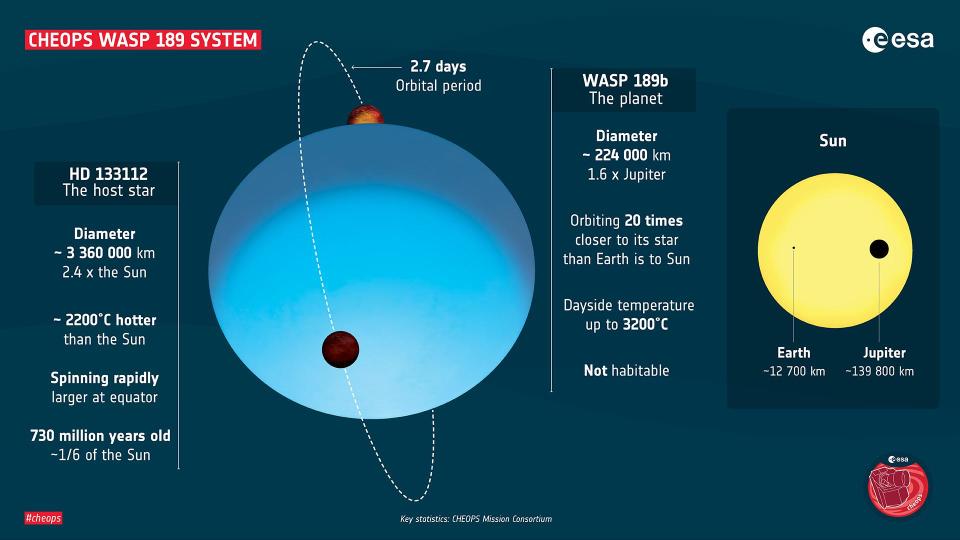Telescope glimpses ‘most extreme planet ever seen’ where surface is 3,200C

A new space telescope has caught a glimpse of a planet which astronomers describe as one of the ‘most extreme’ in the known universe.
WASP-189b was surveyed by the CHEOPS space telescope - and astronomers believe its surface is a blistering 3,200 Celsius, hot enough to turn iron to gas.
The planet is 322 light years from Earth in the constellation LIbra.
The planet is one and a half times the size of Jupiter, the largest planet in our solar system - and has one side permanently turned towards its burning hot blue star.
Read more: What are fast radio bursts, and why do they look like aliens?
That makes for infernally hot temperatures, but as lead author Monika Lendl observes, the planet WASP-189b is more extreme than others of its type.
Lendl says, “WASP-189b is especially interesting because it is a gas giant that orbits very close to its host star.
“It takes less than 3 days for it to circle its star, and it is 20 times closer to it than Earth is to the Sun.”

“Based on the observations using CHEOPS, we estimate the temperature of WASP-189b to be 3,200 degrees Celsius.
“Planets like WASP-189b are called “ultra-hot Jupiters”. Iron melts at such a high temperature, and even becomes gaseous. This object is one of the most extreme planets we know so far.”
Read more: Astronomers find closest black hole to Earth
Even the star around which WASP-189b orbits is very different from the Sun.
Lendl says: “The star is considerably larger and more than two thousand degrees Celsius hotter than our Sun. Because it is so hot, the star appears blue and not yellow-white like the Sun.”
The planet was spotted by observing it passing in front of its host star, Lendl says.
When a planet passes in front of its star as seen from Earth, the star seems fainter for a short time.
This phenomenon is called a transit.
Lendl says, “Because the exoplanet WASP-189b is so close to its star, its dayside is so bright that we can even measure the ‘missing’ light when the planet passes behind its star; this is called an occultation.”
“It appears that the planet does not reflect a lot of starlight. Instead, most of the starlight gets absorbed by the planet, heating it up and making it shine.”
The researchers believe that the planet is not very reflective because there are no clouds present on its day side.
Lendl says, “This is not surprising, as theoretical models tell us that clouds cannot form at such high temperatures.”
Watch: Why are house prices rising during a recession?

 Yahoo News
Yahoo News 
